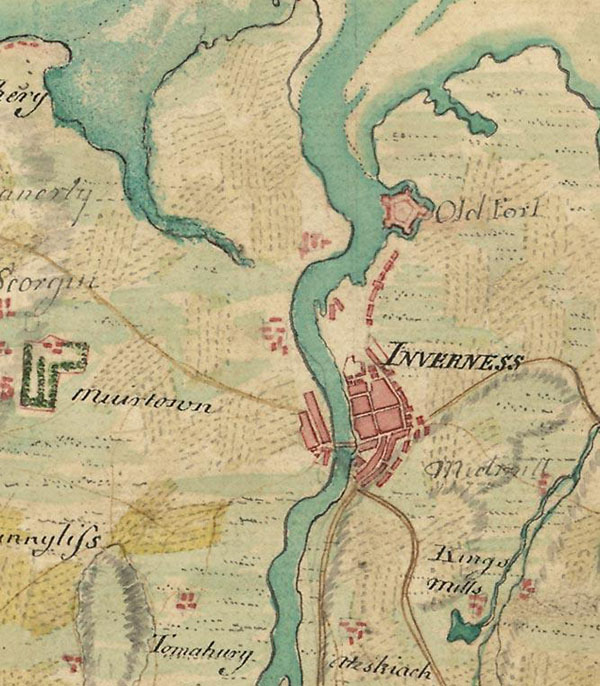Because of its geography, and its limited road network for most of the eighteenth century, Scotland needed a large number of regional or provincial centres. At the top level were the present big two – Edinburgh and Glasgow - followed by Aberdeen and Dundee. Below them were some long-standing medium sized towns such as Dumfries, Inverness, Perth and Stirling. At the lowest level were a few towns which, however small and undeveloped, were important as the centre for a wide if sparsely populated area, for example Fort William and Stornoway. In between were many towns which were locally important. These included some old county towns such as Cupar and Forfar, and others which were market centres for a fairly wide area, such as Crieff or Huntly. John Wood in the 1820s described Montrose as ‘one of the first [leading] provincial towns’.

Part of sheet 26/2e of General Roy's military
survey of Scotland, surveyed c.1750,
showing the regional centre of Inverness
and its immediate hinterland.
© SCRAN/British
Library
Regional centres offered facilities not
available in every town, such as lawyers, doctors, banks, and specialist
tradesmen such as silversmiths or saddlers. Many of the smaller regional
centres became redundant as travel improved, or travel networks changed,
and for some towns the later eighteenth and early nineteenth century turned
out to be a final flourish before stagnation or decay. Most regional centres
were also travel towns, and either industrial or leisure towns.